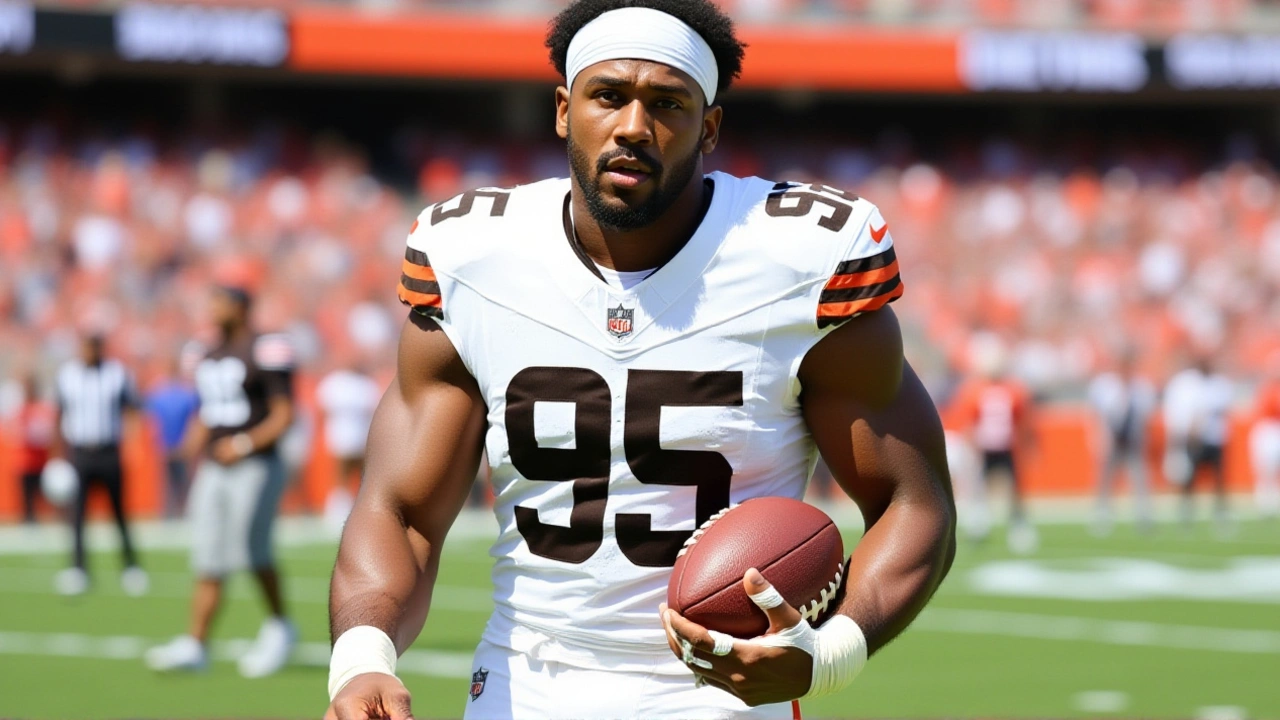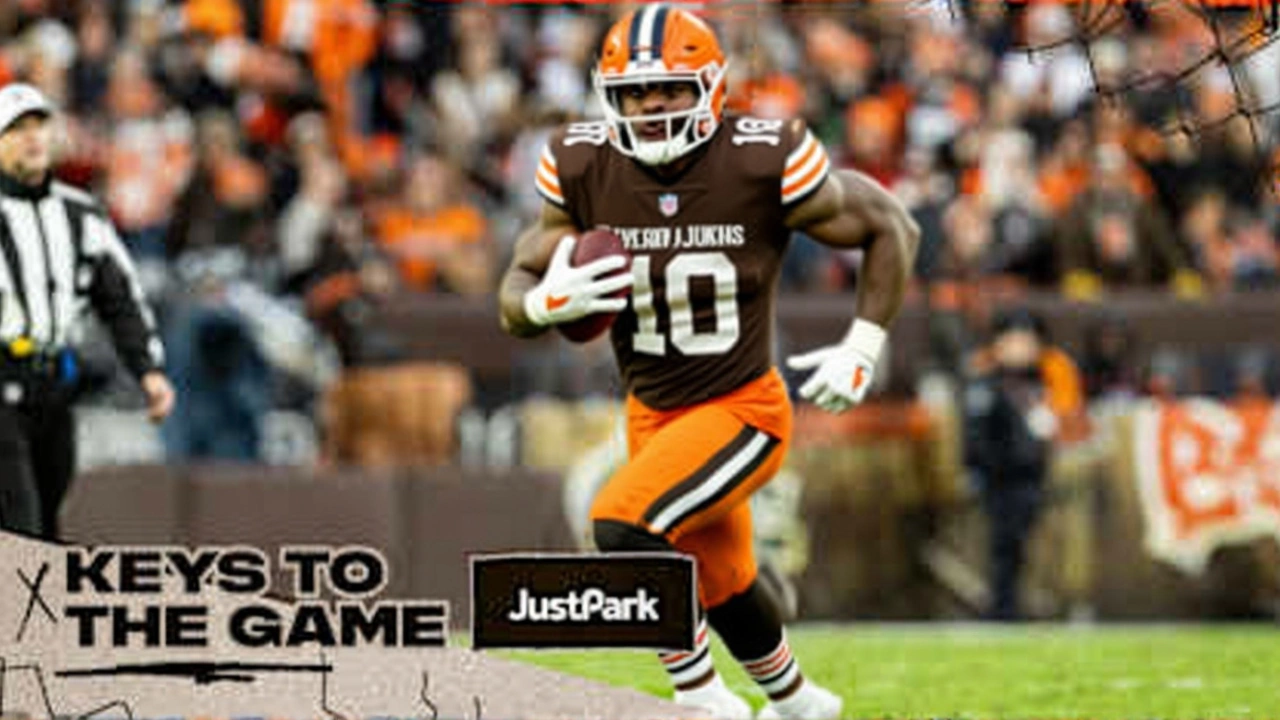When Quinshon Judkins took the snap directly from the center in the third quarter of a chilly Las Vegas night, he didn’t just run for a touchdown—he rewrote the script for the Cleveland Browns’ offense. His second wildcat score, identical in timing, angle, and execution to his first, sent fans into a frenzy and left defenders scrambling. But just 12 minutes later, the same player who had just electrified Allegiant Stadium was carted off to the medical tent, sparking panic among Browns fans and front-office staff alike. The contrast was jarring: one moment, a breakout star; the next, a franchise in holding pattern.
The Wildcat That Shook Las Vegas
Quinshon Judkins, the 22-year-old running back who burst onto the scene in Week 3 of the 2025 NFL season, turned heads with two perfectly executed wildcat touchdowns during the Browns’ road game against the Las Vegas Raiders. The first came on a 14-yard dive up the middle, where Judkins faked a handoff, slipped past two defenders, and dove into the end zone. The second, in the fourth quarter, was a carbon copy: same formation, same gap, same decisive cut. NFL.com’s video report, titled “Another 'Wildcat' TD in Las Vegas! Judkins' second score of game is just like his first,” captured the eerie symmetry. It wasn’t just a play—it was a statement. The Browns hadn’t used the wildcat more than twice in a single game since 2020. Now, it was their secret weapon.An Injury That Echoed Through the Locker Room
The same game that showcased Judkins’ explosive talent also delivered a chilling moment. Midway through the fourth quarter, after a 12-yard run that left two Raiders defenders grasping at air, Judkins collapsed to the turf, clutching his left knee. He didn’t scream. He didn’t flail. He just stayed down. The medical staff rushed out. The crowd fell silent. By the time he was helped off, the Browns’ sideline had gone from celebratory to somber. Times Now News reported he spent 17 minutes in the medical tent, receiving treatment before returning to the field for two final offensive snaps. But the damage was done—emotionally, at least. “Judkins has been the Cleveland Browns’ main running back; therefore, his possible absence would be a big loss for the team,” the report noted, a sentiment echoed by fans on social media and analysts on ESPN’s postgame show.Why This Matters More Than Just Two Touchdowns
Judkins wasn’t just a backup plan. He was the Browns’ most efficient rusher in 2025, averaging 5.8 yards per carry through eight games—nearly a full yard better than the league average. His 712 rushing yards and six total touchdowns had made him the focal point of an offense that struggled to find consistency under quarterback Deshaun Watson. The wildcat wasn’t a gimmick—it was a lifeline. When the Browns’ traditional backfield was stuffed, coach Kevin Stefanski turned to Judkins. And he delivered. Now, with his knee injury still unconfirmed, the team faces a brutal reality: their most dynamic offensive weapon might be sidelined for weeks.There’s no official diagnosis yet. No MRI results leaked. No timeline. But the Browns’ depth chart is thin. Nick Chubb is on IR. Jerome Ford is a solid backup, but he’s never handled 20+ carries in a game. Without Judkins, the offense reverts to predictable play-action and short passes—exactly what defenses want.
Historical Context: Wildcat’s Rise and Fall
The wildcat formation, popularized by the Miami Dolphins in 2008 with Ronnie Brown and Ricky Williams, was once a league-wide phenomenon. Teams like the New England Patriots and Kansas City Chiefs used it to disrupt defenses. But as defensive coordinators adapted—slanting linebackers, assigning spy defenders—the play lost its edge. The Browns hadn’t attempted a wildcat snap since Week 14 of 2022. Until now. Judkins’ two scores weren’t just lucky breaks. They were the result of weeks of film study, practice reps, and trust from Stefanski. If Judkins is out, that creativity dies with him.
What’s Next for the Browns?
The Browns face the Pittsburgh Steelers next Sunday, then the Cincinnati Bengals in Week 11. Both are divisional rivals with aggressive defenses. If Judkins can’t play, expect more time for Ford and a heavier reliance on tight end Harrison Bryant. But the rhythm of the offense? Gone. The spark? Dimmed. The team’s playoff hopes—already hanging by a thread at 4-4—could unravel quickly. Meanwhile, the medical staff is reportedly monitoring Judkins’ recovery closely. Sources say he’s been “non-weight-bearing” for 48 hours post-game. That’s not a good sign.Who’s Behind the Browns’ Success—and Their Vulnerability?
The Cleveland Browns are owned by the Haslam family, with Jimmy Haslam as principal owner. Their headquarters in Berea, Ohio, have been a hub of quiet optimism this season. But Judkins’ injury has forced a reckoning: talent without durability is just potential. And in the NFL, potential doesn’t win games. It just makes the fall harder.Frequently Asked Questions
How serious is Quinshon Judkins’ injury?
The exact nature of the injury remains unconfirmed, but reports indicate Judkins was non-weight-bearing for 48 hours after the game, suggesting a significant knee issue—possibly a ligament strain or meniscus damage. No MRI results have been publicly released, but sources close to the team say a timeline for return is expected within 72 hours. If it’s a high-ankle sprain or MCL tear, he could miss 4–6 weeks.
Why is the wildcat formation so effective for Judkins?
Judkins’ low center of gravity, quick decision-making, and deceptive footwork make him ideal for the wildcat. Unlike traditional quarterbacks, he doesn’t need to fake a handoff convincingly—he just needs to read the defense and explode through the gap. His 2025 stats show he gains an average of 7.1 yards on wildcat attempts versus 4.9 on standard runs. That’s a game-changing difference.
Who steps up if Judkins is out long-term?
Jerome Ford is the primary backup, but he’s averaged just 3.6 yards per carry this season. The Browns could turn to rookie Javon Baker, a speedster drafted in the fifth round, or even use fullback Lawrence Cager in a hybrid role. But none have Judkins’ elusiveness. Without him, the Browns’ offense loses its most reliable weapon in short-yardage and goal-line situations.
Has the Browns’ offense struggled without Judkins in the past?
Yes. In Week 5 against the Baltimore Ravens, Judkins was held out due to a minor ankle tweak. The Browns managed just 58 rushing yards and lost 24–17. Their average yards per play dropped from 5.9 to 3.8. That game was the turning point where coaches realized Judkins wasn’t just a contributor—he was the engine.
What’s the financial impact if Judkins misses games?
Judkins is under a four-year, $4.2 million contract, with no guaranteed money beyond 2025. But his absence could cost the team in ticket sales and merchandise—his jersey is now the #2 seller in the AFC North. More critically, if the Browns miss the playoffs, they risk losing draft capital and future cap flexibility. A 10-win season could mean a top-10 pick; a 7-win season could mean a top-5 pick—both are massive swings in franchise value.
Could this injury change how the Browns use the wildcat going forward?
Absolutely. If Judkins is sidelined, the Browns may abandon the wildcat entirely until he returns—or risk exposing a backup to the same physical toll. Coaches may shift to more traditional power runs or play-action passes. But without Judkins’ unique skill set, the formation loses its threat. It’s not just a play—it’s a personality. And right now, that personality is on the sidelines.

Write a comment